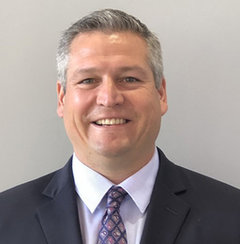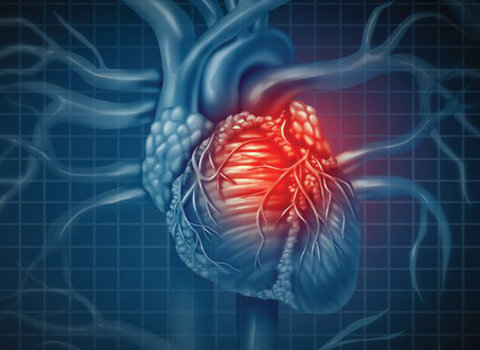Monitoring the Heart
The Market Shifts
The increasing cost of healthcare is prompting a marked shift from traditional hospital-based care to remotely-driven prediction, diagnosis, and monitoring. While devices are becoming smaller and more affordable, workflows are becoming more efficient because of faster processing time, wireless capabilities, and algorithms for clinical accuracy.
Our conversations with over 50 CEOs in the ambulatory cardiac monitoring space showed that companies within the space were well-poised to reap the rewards of this paradigm shift. They also indicated that within the ambulatory arrhythmia monitoring market, the cardiac mobile telemetry segment is well-geared to produce major disruptions in the coming years.
Many CEOs illustrated how companies were using AI in novel ways, providing physicians with decision support by interpreting and highlighting key findings from arrhythmia monitoring procedures according to well-established protocols.
The shift from a hospital-based care model to one that places thepatient at the centre of the med-tech ecosystem is gaining momentum, making monitoring and diagnostic solutions available outside of clinical care settings to a range of end-users.
“The most interesting trends are the ones we’ve seen develop over the past year,” said Ranndy Kellogg, President and CEO, Omron, the maker of blood pressure monitors.“The strong and overwhelming response for our products and the feedback from consumers show us that the appetite is ripe for heart health tools that looked different, were highly portable and provided expanded capability on what they could measure.”
Peter van haur, Chief executive Officer of Vital Connect, stressed that patients were increasingly taking on proactive roles in managing heart diseases. “Our critical insight is that cardiac patients are also consumers who have experience with highly intuitive smartphones and other consumer-friendly electronic devices. Therefore, the cardiac monitoring trend will be towards smaller, portable and easy-to-use devices that don’t require a suitcase to store and transport,” he said.


Ranndy Kellogg
Peter van haur
Patient-centred Ecosystem
Although the single-lead ECG market for wearables is over-crowded, most FDA-approved solutions are designed to only detect atrial fibrillation (AF)—the most common clinically actionable arrhythmia. “This is a very limited space,”
says Branislav Vajdić, CEO of HearBeam, which is among a handful of companies taking a road less travelled. “Our device is fundamentally different—we detect AF and other arrhythmias, but our true initial value lies in detecting a heart attack. The next step is to supplement that with all other cardiovascular diseases that have an electrical ‘signature’,” he said, stressing that although the device was designed for patients, acceptance of the technology would lead through cardiologists.
While several companies offer 2-, 3- and 6-lead ECGs for home-use, companies like QT Medical are betting on 12-lead ECGs that constitute the gold standard in the industry. QT Medical CEO Dr. Ruey-Kang Chang bills 12-leads “as the next frontier for the wearable ECG and home monitoring market.


Branislav Vajdić
Dr. Ruey-Kang Chang
Multi-lead ECG Wave
“When wearables first grew in popularity, the industry focus was primarily around providing consumers with a way to track their health,” said Mathieu Letombe, CEO of Withings. “At Withings, we’ve always had a focus on designing easily wearable devices that not only monitored patients’ health levels, but also provided them with valuable insights and information, prompting them to make key lifestyle changes to reach their goals.”
Brad Harlow, CEO of Cardiac Insight, said that aside from developments on the technological front—like commoditization of hardware, and software solutions based on efficient data processing, machine learning algorithms and big data training—operational transformations also played a crucial role in the shift towards proactive and preventive care. “Consolidations among remote cardiac monitoring service providers limited the options for some customers, but they also opened the market for other types of players and startups,” he noted.
Coverage for wearable devices under existing health plans also stood out as an important push factor in this area.


Mathieu Letombe
Brad Harlow
Shift to Proactive, Preventive Care
Companies in the ambulatory cardiac monitoring space are deeply invested in reaping the benefits of big data. Most of their solutions, for instance, are focused on developing wearable monitors that can record and transmit heart rhythm data for up to 30 days at a stretch.
Stuart, CEO of InfoBionic, laid out what this meant in real terms. “In our solution, we make 100% of the data collected available to end-user clinicians. In just two weeks, that’s 20,000 minutes of data—approximately 1.5 billion heart beats at a rate of 75 beats per minute! With arrhythmias, heart rates can be much higher, so there’s even more data—and I’m not even talking of the sheer complexity of arrythmia types and morphologies,” he said.
Other CEOs concurred with Stuart, saying AI was essential to coagulate such large sets of data and present findings in ways that clinicians could assemble, review, present and interpret with greater accuracy and efficiency.
Sun LeQun, the CEO of MinttiHealth, illustrated the possibilities opened up by AI. “We are interested in combining the graphs of ECG signals and heart sound signals for a more vivid and complete analysis. Think of it in terms of a vivid painting—where the ECG signal gives out a sense of the broad frame, its rhythm and structure, while the heart sound signal shows the saturation of colors and granularity of strokes, presenting the details to the viewer,” he said. “We think that the fusion of heterogeneous data on cardiac indications will be a new trend in the future diagnosis and analysis of cardiac diseases.”


Stuart Long
Sun LeQun
Embracing AI is the Key
Most companies in the ambulatory cardiac monitoring space are focused on the symptomatic market, whereas a large proportion patients do not exhibit symptoms suggestive of arrhythmia, such as palpitations, dizziness, shortness of breath, or unexplained fainting (syncope).
While such patients remain largely undiagnosed, our interactions with CEOs revealed some companies were beginning to think of the asymptomatic market, and were investing resources to find out if risk factors – like age, diabetes and sleep apnea – conferred directly with the presence of arrhythmias.
Such developments point towards the possibilities of realising 24/7 cardiac monitoring outside of clinical care settings as the Internet of Things becomes widely available, although companies would need to find a way to deal with data overkill.

Asymptomatic Market Opportunity